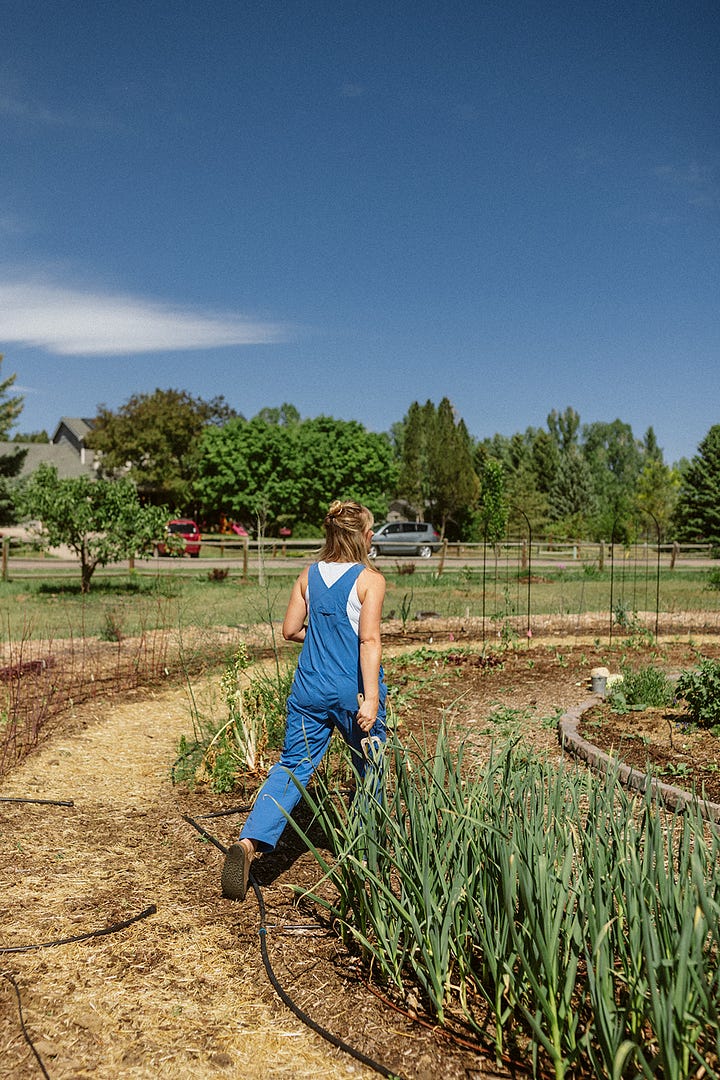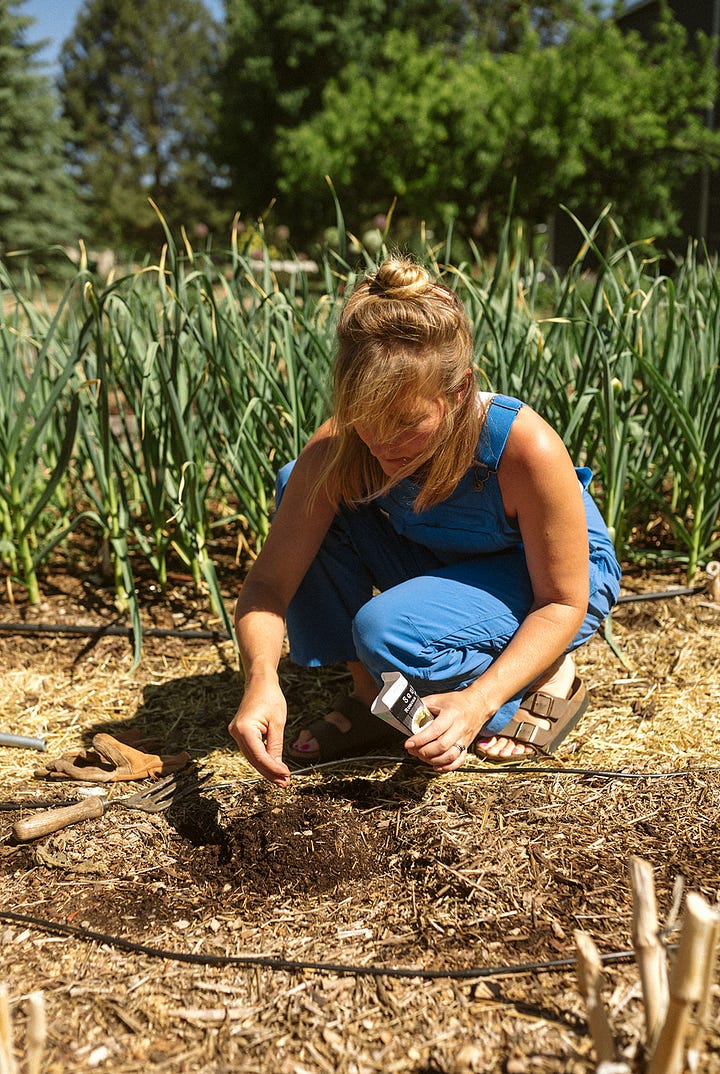Rethinking Garden Pathways: a Chance to Build with Care
There is a healthier way to do things and this is how.
Calling all Garden Guardians!
Before I start, let me be clear—I’m not a perfect earth warrior. I have my flaws. I’ve made choices out of convenience, just like we all have. But here’s the thing: I care. I care a lot. Like, a lot, a lot about this earth. And my goal isn’t to claim perfection—it’s to learn, to grow, and to do better.
So much of the environmental mess we’re facing today comes from convenience. And I get it—convenience makes life easier. But easier doesn’t always mean better, and in many ways, choosing what’s “quick and simple” has led us further away from connection, stewardship, and the kind of care the earth truly needs.
That’s why I write these articles—not just to share ideas with you, but to learn alongside you. To help myself and others move away from forcing nature to bow to our demands and instead return to our ancient role: as guardians of the earth.
Because every choice we make in the land we are privileged to steward is a chance to shape the future—for better.

We Do What We Are Told
For many of us home gardeners and DIYers, we tend to follow what we see—without questioning it. We imitate what’s common, what’s available, and what looks like the “right” solution. And why wouldn’t we?
Companies that sell landscape fabric and plastic sheeting want you to believe their product is the answer. They have marketing teams dedicated to showing you why you need it, making it sound like the obvious, responsible choice. When you walk into a garden center looking for a solution, this is the one that’s neatly packaged, labeled, and sitting on the shelf. The price is cheap, the instructions seem easy, and it promises quick results—a perfect weekend project! That alone makes it an easy sell.
It’s cheap.
It’s easy.
It promises a quick fix.
We are told that these materials will keep weeds out, but from my personal experience working in many gardens, what happens is weeds land on top of the fabric no matter what.
But what isn’t being sold to us?
💭 The idea of reusing cardboard to smother weeds naturally.
💭 The concept of recycling landscaper mulch instead of constantly buying new bags of wood chips.
💭 The beauty of a green walkway, where creeping thyme or clover grows between stepping stones.
Why don’t we hear about these alternatives? Because they don’t make big companies a lot of money. They take a little more thought, a little more patience, and in many cases… they actually save you money.
But here’s the thing: we don’t have to do what we’re told. We can think for ourselves, question the “easy fix,” and make choices that actually work better for our gardens, our wallets, and the planet.
And the best part? Once you break free from the idea that gardening solutions have to come wrapped in plastic, a whole new world of possibilities opens up.
So let’s rethink what we’ve been told. Because the best solutions often aren’t the ones sitting on a store shelf—they’re the ones growing right under our feet.
Alternatives for Healthier Pathways
Instead of battling nature—constantly suppressing her attempts to heal and regenerate—what if we worked with her, aligning her natural rhythms with our own goals?
When we think about pathways, their purpose is simple: to guide us, to make movement effortless, to create a clear and navigable journey. Paths are a form of invitation, leading us from one space to another with ease. It’s natural to want them to be well-defined—we don’t want to trip, we appreciate a sense of order, and we use them to distinguish walking areas from planted beds.
But what if we could achieve that without forcing nature into submission? What if our paths weren’t just something we cleared away, but something we built with care—balancing function, beauty, and the health of the land beneath our feet?




Sustainable & Beautiful Alternatives
Cardboard & Mulch- But those Amazon boxes to use
This method smothers weeds while nourishing the soil.
Over time, this material breaks down into rich, healthy earth. This is what happens naturally on forest floors and provides that nice loamy soil.
Take it a step further and call a local arborist to see if they can drop off free mulch to you from one of their jobs.
Cardboard should overlap on all ends by 6” and mulch should be at least 3-4” deep.
Challenges are that eventually you will need to replace the mulch every few years. You can also remove the decomposed mulch and add it to your beds or to your compost.
Crushed Stone Under Rock Pathways- A solid approach
This method, while more expensive, lasts for generations and causes little to no harm to your environment. However, the materials are likely extracted from their natural environment before they make it to you.
This approach works in that the small crushed stone forms a solid barrier, making it harder for weeds to root or come up from the ground as there are fewer crevices for them.
While the stone particles are small, they still allow water to flow freely below, meaning no trapped moisture like you would have with a plastic barrier.
A Living Pathway- Natures Solution
Living pathways can look like letting the native ground take hold. Or it could be by introducing ground covers that do naturally in your areas and filing the spaces between stepping stones. Examples are clover, thyme, purslane, spurge, dandelions. (All the plants we were told look weed are in fact wonderful medicine for the soil and our bodies.)
The butterflies love it, the bees love it and the soil loves it. Do you?
What about the weeds?
Weeds will show up no matter what you do. It’s natures way. Plant opportunistically try to survive. Instead of fighting the never-ending battle, what if we shifted our approach?
Most weeds are trying to serve a purpose. If you can do what they are trying to do better, they wont show up. For example, bindweed feels like the hardest weed to get rid of. Know where it shows up a lot? In nutrient poor and exposed soils. What does bindweed do? It has a deep taproot that pulls up nutrients from below into it’s greenery. Those long vining tendrils spread out to cover the earth and protect it from UV damage. Bindweed is trying to help, even if it doesn’t always feel that way. How can you do it’s job better? Add compost/nitrogen and keep your earth well mulched or covered.
Deep mulch, blocks sunlight and makes it harder for weeds to germinate.
Pull them when you see them and before they go to seed. A little each day doesn’t make it feel too overwhelming.
Secret weapon? Boil water and pour on the plant on a hot day. May take a few times but its chemical free!
A Legacy of Care: The Future Is in Our Hands

The land we care for today is part of a much bigger story. The choices we make—whether big or small—shape the future of our gardens, our communities, and the generations that follow.
Rather than seeing our gardens as something to control, we can see them as something to nurture. We can create spaces that don’t just look beautiful but feel alive, supporting pollinators, soil life, and the next stewards who may one day walk these same paths.
This is an invitation to build with intention, to care deeply, and to know that every small action matters.
Imagine… a garden where the soil is rich, the pollinators thrive, and every path feels alive.
Imagine… a world where we pass down knowledge and beauty, not plastic and waste.
Imagine… the next generation walking your garden paths, feeling the love and care you put into every choice.
Spread the message!
Every small action makes a difference. I truly believe when we know better, we eventually want to do better- even if it only starts off deep down. Sometimes we just need someone to help guide or inspire us.
If this resonated with you, please share.
We do this together. One action at a time.




